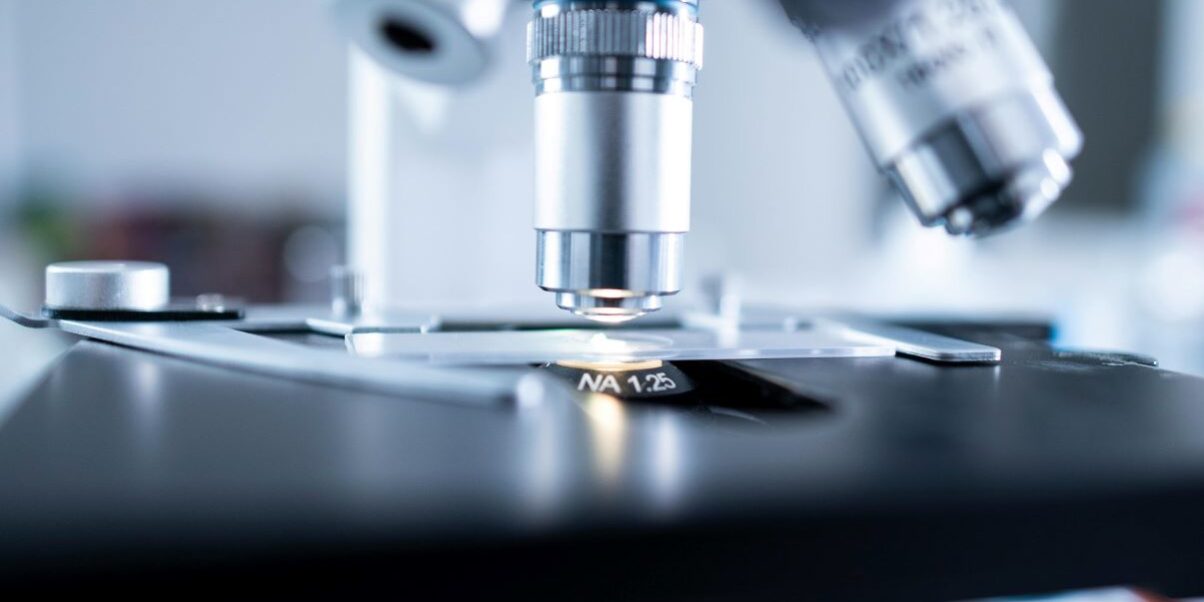In recent years, the field of hair restoration has witnessed significant advancements, with stem cell transplant for hair transplants emerging as a promising and innovative approach. Stem cell hair transplants offer a revolutionary solution to hair loss by harnessing the regenerative power of stem cells to stimulate hair follicle growth. This article aims to provide a comprehensive overview of stem cell hair transplants, exploring the science behind the procedure, its potential benefits, and current developments in the field.
Understanding Stem Cells and Hair Growth:
Stem cells are undifferentiated cells with the unique ability to develop into various specialized cell types. In the context of hair regeneration, researchers have focused on mesenchymal stem cells (MSCs) derived from different sources, such as adipose tissue (fat), bone marrow, and umbilical cord blood.
Hair growth is a complex process that involves the cycling of hair follicles through stages of growth, regression, and rest. Stem cells play a crucial role in maintaining and regenerating these follicles. In cases of hair loss, the dormant or miniaturized hair follicles can be reactivated and rejuvenated through the introduction of stem cells.
Otologous hair follicle stem cell transfer is a treatment method used to combat androgenetic alopecia and other hair loss problems. The procedure is a single session. In the treatment, a suspension of the patient’s own (autologous) cells is injected. The injected stem cells increase the number of progenitor (precursor) cells through mitotic division in the treated area, thereby renewing the body tissues. Scientific studies have proven the effectiveness of stem cell therapy.
Two pieces of skin, each containing hair follicles with a diameter of 2.5 mm, are taken from behind the ear or neck area and divided into particles smaller than 50 microns. The hair follicle stem cells, transformed into a solution, are injected into the areas of the scalp where hair loss is occurring. Results from the procedure can be observed in about 2-3 months. Combining it with other treatments enhances treatment effectiveness.When done together with the hair transplant this method is very effective for transplanted to hair to grow faster and thicker.
What Are the Benefits and Advantages of Hair Follicle Stem Cell Therapy When Done Together With Hair Transplant?
It is an outpatient treatment procedure.
Supports natural hair growth.
No side effects like allergic reactions, infections, or irritation of the scalp associated with other treatments.
Stimulates weak or aging follicles.
Strengthens hair follicles.
May halt the process of hair loss.
Can improve thin and damaged hair.
Strengthens existing hair.
Recent Developments in Hair Follicle Stem Cell Treatment
Offers rejuvenation for the skin and newly transplanted hair. Current treatments can slow down genetic hair loss rather than completely stop it. In recent years, stem cell treatments, also known as autologous cell transfer, show promise. Patients with genetic hair loss up to a certain stage can benefit from this treatment.
What Is Hair Follicle Stem Cell Treatment or Stem Cell Treatment?
Stem cells are cells with the potential to transform into different cell types in the body. These are cells that cannot perform a specific function and are not specialized for a task. These cells, known as stem cells, can divide and renew themselves to become other cell types in the body. They help repair specific tissues in the body by dividing and replacing damaged tissues.
Am I Suitable for Hair Transplantation with Stem Cell Treatment?
It is used in the treatment of genetic hair loss in both men and women. Better results are obtained in patients treated in the early stages of hair loss. It is usually combined with a hair transplant treatment. Stem cell hair transplants are known to be very effective.
At What Age Can Stem Cell Treatment Be Performed?
There is currently no age limit for treatment. The important thing is to undergo treatment before hair loss progresses.
How Are Hair Follicle Stem Cells Obtained?
Skin patches, ranging from the thickness of the skin down to the fat tissue, are taken from behind the ear or back of head and placed into a special device. The skin patches are prepared as a stem cell suspension with a device.
How Is Stem Cell Treatment Performed?
Skin patches obtained from behind the ear are separated into particles at the micron level and injected into the skin areas where hair is starting to fall out. The procedure takes approximately one hour.
When Do Results of Hair Follicle Stem Cell Treatments Begin to Show?
About a month after the procedure, the transplanted stem cells begin to take effect, with maximum results seen in 6-12 months.
How Long Does Hair Follicle Stem Cell Treatment Last? Is the Procedure Painful for Hair Transplantation with Stem Cell Treatment?
Since local anesthesia is applied to the area where the skin patches are taken, there is no pain during the procedure. The injection of stem cells is done with 32 G needles, resulting in low-level discomfort.
What Are the Side Effects of Hair Follicle Stem Cell Treatments?
Since it is made from the patient’s own tissue, there is no risk of allergy or autoimmunity. Additionally, there are no foreign substance additives. Attention should be paid to sterilization in the area where the skin patches are taken, as there may be risks such as infection otherwise.
Does Stem Cell Treatment Cause Hair Loss? What Should I Pay Attention to After Hair Transplantation with Stem Cell Treatment?
Applying antibiotic cream to the area where the skin patches were taken for a few days is sufficient to prevent infection.
Can Hair Follicle Stem Cell Treatment Replace Hair Transplantation?
For patients who have already experienced hair loss and lost their follicles, hair follicle stem cell treatments in the advanced stages of hair loss the stem cell treatment itself will be not beneficial however when combined with a hair transplant the results are usually remarkable.

The Stem Cell Hair Transplant Procedure:
Stem cell hair transplants typically involve the extraction of stem cells from the patient’s own body, known as autologous transplantation. The process begins with harvesting stem cells, often from adipose tissue through a minimally invasive liposuction procedure. These stem cells are then isolated and prepared for injection into the scalp.
Once prepared, the stem cell solution is injected into the targeted areas of the scalp, where hair loss or thinning is evident. The regenerative properties of the stem cells stimulate dormant hair follicles, after the transplant promoting new hair growth. The entire procedure is performed on an outpatient basis, and patients can usually resume their daily activities shortly after the treatment.
Benefits of Stem Cell Hair Transplants:
- Natural Hair Regrowth: Stem cell therapy promotes natural hair regrowth by reactivating dormant follicles, resulting in thicker and healthier hair.
- Minimally Invasive: Compared to traditional hair transplant procedures, stem cell hair transplants are minimally invasive, reducing the risk of complications and promoting faster recovery.
- Reduced Scarring: Since the procedure involves the use of the patient’s own cells, the risk of scarring is significantly lower than with other hair transplant methods.
- Versatile Application: Stem cell therapy can be used in conjunction with other hair restoration techniques, enhancing overall effectiveness.
Hair Treatment with Stem Cells: In Which Cases is it Applied?
The primary purpose of hair treatment with stem cells is to prevent existing hair strands from falling out, strengthen hair strands, and nourish hair follicles to promote the growth of new hair strands. If your hair has significantly fallen out, the correct procedure may involve a combination of hair transplantation and PRP (Platelet-Rich Plasma) application. Individuals who undergo hair transplantation with PRP do not encounter hair loss problems. Treating hair follicles with stem cells can make them more vibrant and healthy, ensuring the formation of new hair strands that are lively and robust. Hair treatment with stem cells is applicable for both men and women with thinning and weakened hair. You can recover a significant portion of the hair strands you have lost. Even if your hair has fallen out, your treated hair follicles can stimulate your body to produce new hair.
When Do Those Who Undergo Hair Follicle Stem Cell Treatment See Results?
When combined with a hair transplant, hair loss significantly decreases. In the following months, it can be observed that the areas of hair loss are covered by newly grown hair. Definitive results are observed between 6-12 months.
How much does it cost to get a stem cell transplant for hair?
Since its a tailored treatment costs vary but you could get stem cell hair transplant between 2.000 to 4.000 pounds in Istanbul where most experienced professionals in the country operate.
Conclusion:
Stem cell hair transplants represent a cutting-edge solution for individuals experiencing hair loss. The regenerative potential of stem cells offers hope for those seeking a natural and minimally invasive approach to hair restoration. As research progresses and technology advances, the future of stem cell therapy in the field of hair restoration holds great promise, unlocking new possibilities for individuals looking to regain their confidence through a fuller head of hair. Feel free to check out NHS for more information about hair transplants or this page on NHS for stem cell treatments.
Feel free to contact us 24/7 if you have any questions!









Thank you! I will be in touch.
We are always there for you. Cheers -Medic istanbul